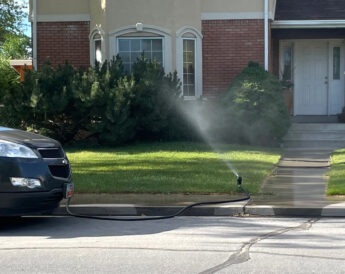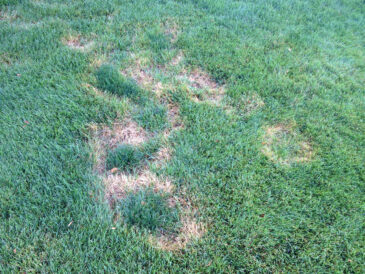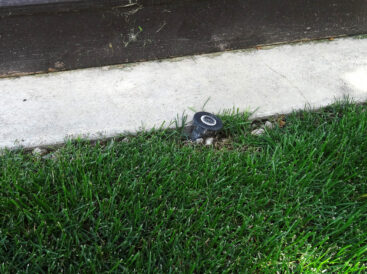Garden Help Desk: Lawn going brown? Check your watering method
- If the droplets from sprinklers are small and form a fine spray, they can easily be blown away instead of landing on the lawn.
- Some diseases or pests can leave a distinctive pattern of damage in a lawn, so photos are sometimes helpful in identifying the cause of lawn problems.
- Correcting a tilted sprinkler head can often eliminate a dry area in a lawn.
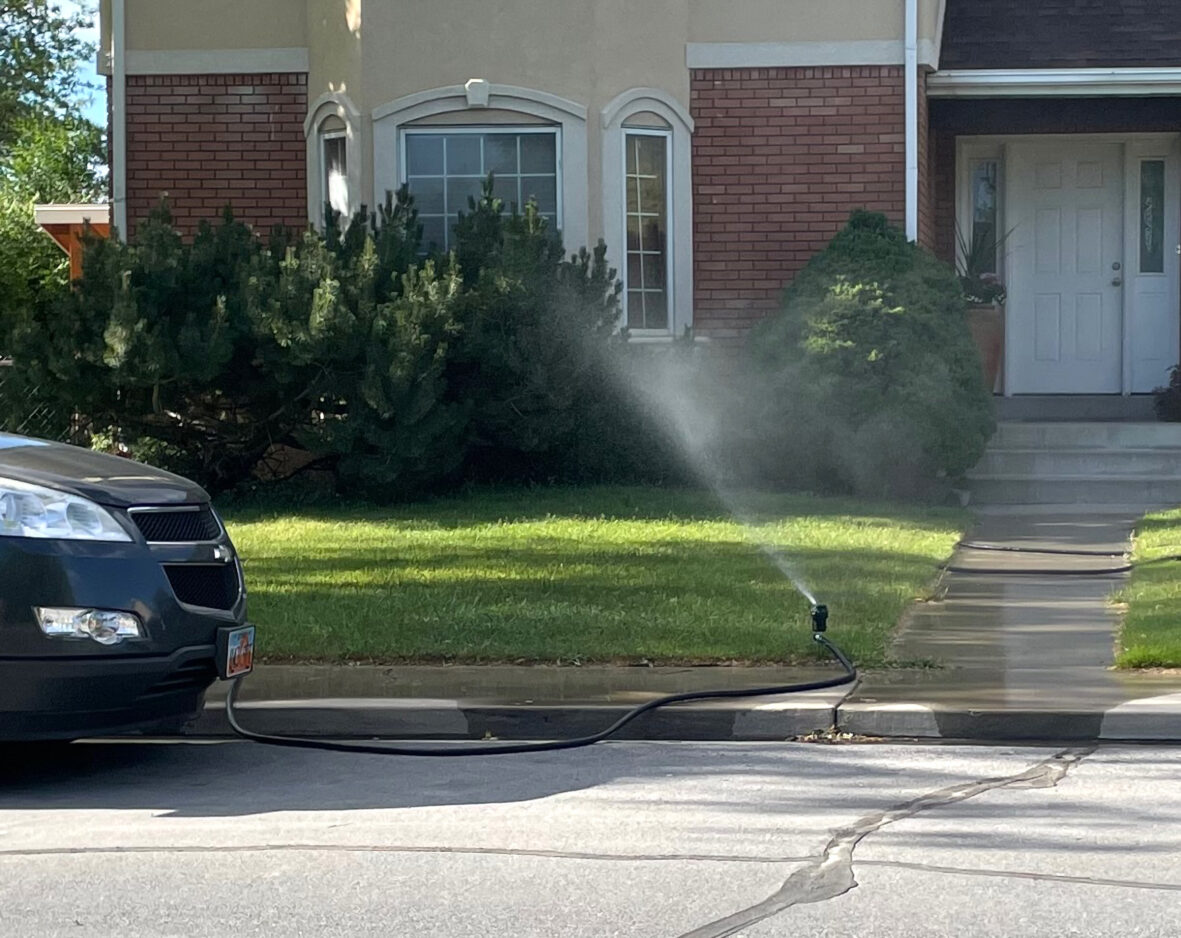
Courtesy Meredith Seaver, USU Extension
If the droplets from sprinklers are small and form a fine spray, they can easily be blown away instead of landing on the lawn.
My lawn is burning up in the heat. Can I put on some nitrogen to help it green up and grow?
In general, it’s best if we don’t fertilize stressed plants, especially water-stressed or heat-stressed plants, and that includes our lawns.
The lawns in our area are cool-season lawns – they grow best in the spring and fall and try to take a break during the hottest part of the summer.
Nitrogen will push vigorous green growth, and that’s not what your lawn needs to do during hot weather. The best thing you can do for your lawn right now is to hold off on the nitrogen for several more weeks so that your lawn can wait out the heat for a little longer.
If your lawn looks like it is burning up, the first thing to do is take a closer look at your watering.
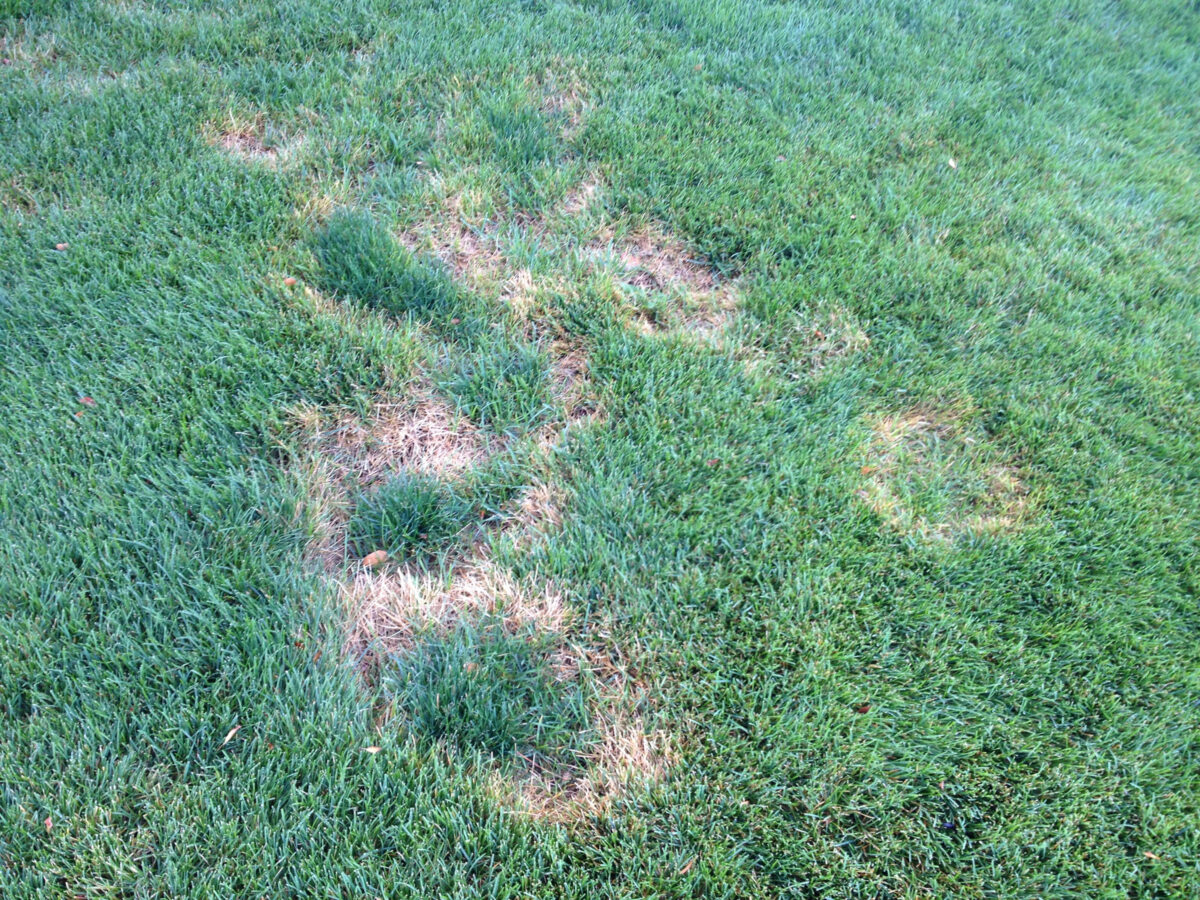
Courtesy Meredith Seaver, USU Extension
Some diseases or pests can leave a distinctive pattern of damage in a lawn, so photos are sometimes helpful in identifying the cause of lawn problems.
Are you watering for just a few minutes every day, or are you watering deeply but only every few days? Deep, less frequent watering is best for our lawns. Roots need oxygen, and deeper, less frequent watering allows time between waterings for air to move down into the root zone, bringing oxygen to the roots. Deep, less frequent watering encourages deeper, healthier roots, which will help your lawn deal with the heat a little better.
Good watering isn’t just about how many inches of water you apply or how many minutes of your run each sprinkler zone. It’s also about how far down into the soil the water is moving. Moving water 8 inches down into the soil is a good goal for encouraging deep roots for lawns.
If you think your brown spots are caused by a watering problem, you can check for uniformity by using a long screwdriver. Wait several hours after watering and then push the screwdriver into the lawn in areas that look good. Then do the same thing in areas that are browning. If the screwdriver doesn’t push in just as far and just as easily in the browning areas as it did in the green areas, you’ll know that you have a sprinkler coverage problem and you’ll need to do a careful check of your sprinkler system.
There are several things to look for when checking your sprinkler system. Start by running your sprinklers while you watch each zone. Then ask yourself the following questions.
- Are there sprinklers that are tilted? Even a slight tilt can create a dry spot.
- Do you see any sprinklers that aren’t popping up all the way or that are blocked by other plants? Sprinklers can’t cover the intended area if they are blocked or don’t pop up all the way.
- Are you getting good head-to-head coverage or is the sprinkler spray only “meeting in the middle?” Good watering coverage depends on the area around each sprinkler head being watered by its neighbor.
- Do you see a lot of misting and small droplets billowing up into the air while your sprinklers run? Coarser droplets fall to the lawn more quickly, which means more of the water stays where it’s needed.
Make any needed adjustments or repairs so that everything is working well: the right run time for a deeper soak; the right nozzles in your sprinkler heads; sprinklers rising straight and tall; nice, coarse droplets that fall onto the lawn instead of blowing away; and good head-to-head coverage.
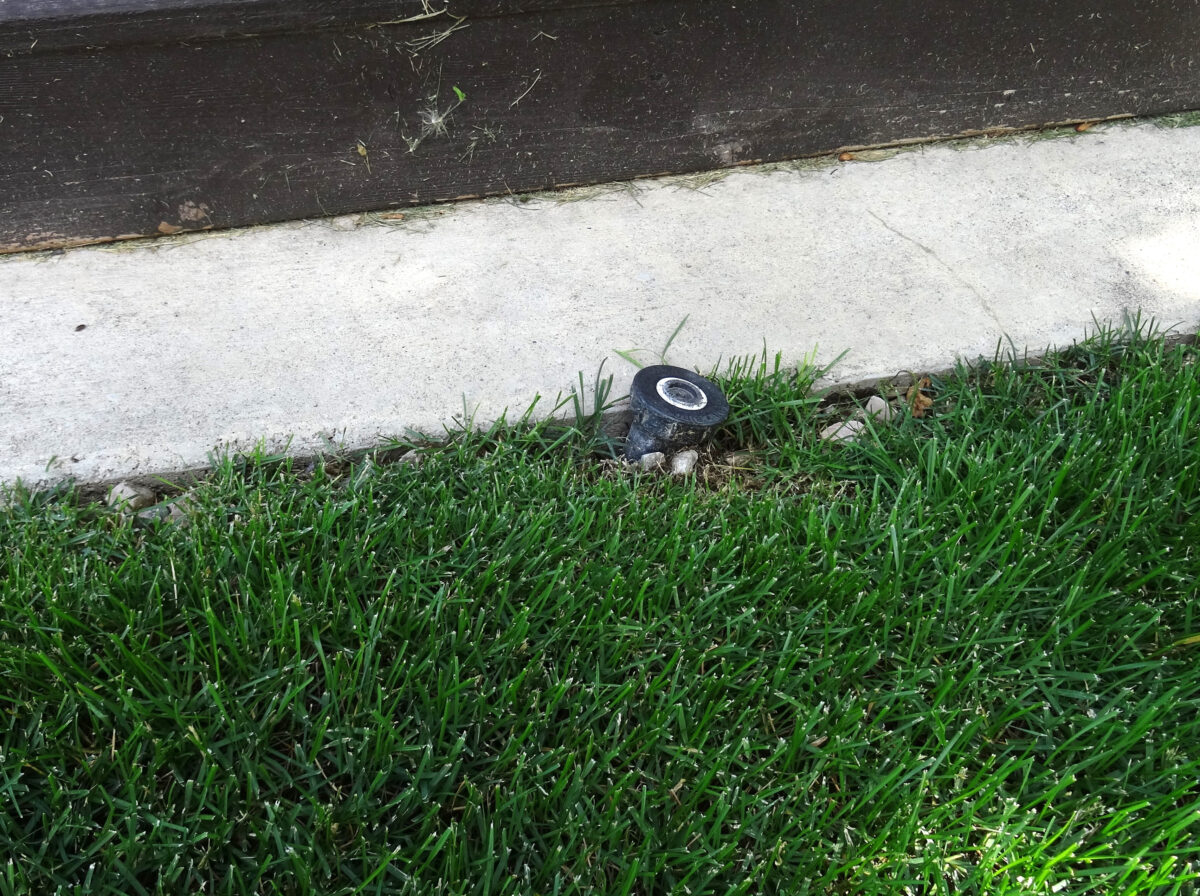
Courtesy Meredith Seaver, USU Extension
Correcting a tilted sprinkler head can often eliminate a dry area in a lawn.
Once everything seems to be working well and you’re watering deeply but not too frequently, if you’re still having problems, you may need to watch your sprinklers run at the time of day or night that they normally run. Water pressure can be different at different times of the day or night and that can affect how well your sprinkler system works. Watching your sprinklers work at the time they normally run may also clue you in to winds that weren’t there during the day when you did your sprinkler check. You may find that you need to water earlier or later or adjust the number of minutes you run each zone.
If you’re still seeing problems with your lawn after giving your watering program a good checkup, you can send photos of your lawn to gardenhelp@usu.edu. Some lawn pest and disease problems show up with patterns of damage in a lawn, and we can take a look and check for those patterns or other details in photos that help to narrow down the possible causes.
There’s one last lawn care adjustment you may need to make. Have you been keeping your lawn clipped short or bagging the clippings? If so, changing these habits can benefit your lawn. Mowing tall (3 to 3.5 inches) and using the mulching feature on your mower will help your lawn go through the summer heat with less stress.

